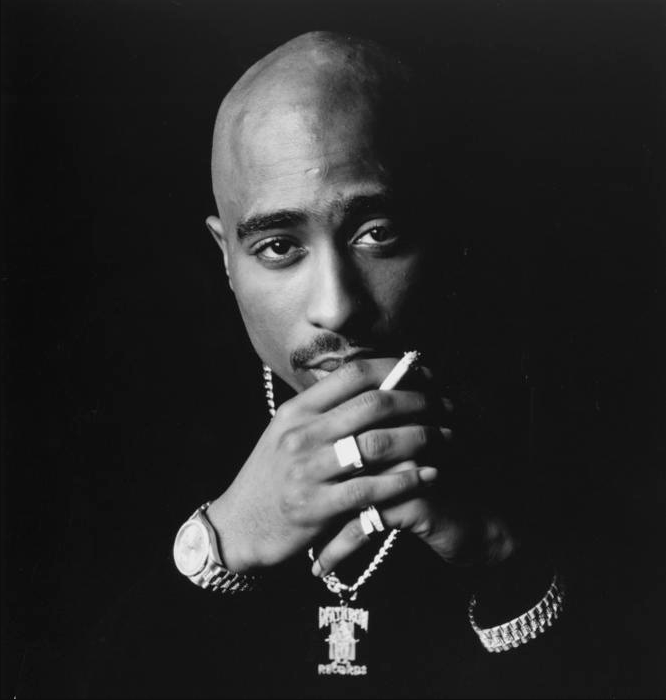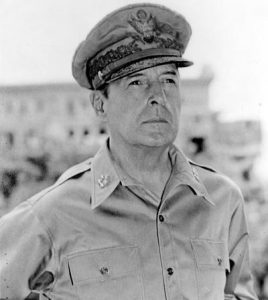Tupac Shakur, a rapper in the 1990s, was known as a legend in the hip-hop and R&B industry for creating impactful music that told a story.1 Every single song he wrote was focused on social and cultural issues, such as gang violence, drugs, childhood struggles, and loss of loved ones, which is why he was successful from the beginning of his music career. Although he was successful, he had a lot of challenges that came with his lifestyle, including run-ins with the law for battery and sexual assault. He had a code that he honored so much that he even had it tattooed across his pelvis: “Thug Life.” This code, along with the hard life he lived, didn’t bring much ease to his situation with the law.2 Although Tupac had his troubles, his music was his escape and his motivation to overcome the obstacles that were set for him.
The first album Tupac released on his own was 2 Pacalypse Now in November of 1991.3 It was a hit from the start, reaching the top of the Billboard charts, and it didn’t take long for it to go gold, making this album his first solo debut as a rapper. He knew what he wanted and he was going to get to the top no matter what. In an interview with Vibe, he stated, “I never went to bed. I was working it like a job. That was my number one thing when I first got in the business. Everybody’s gonna know me.”4 However, with the start of his stardom and fame in music began the start of his journey living the “Thug Life.” He was constantly asked why he chose that lifestyle and why he chose to be a “thug.” His response was, “Because if I don’t, I’ll lose everything I have. Who else is going to love me but the thugs?”5

His music and his lifestyle attracted a lot of attention: good attention as well as bad. The good attention focused on the stories that were told by his music, stories that people could relate to as well as stories that other people couldn’t bring themselves to talk about. The bad attention came from authority figures who thought his music was undermining them and promoting violence among young adults listening to his music. One song that was criticized was “Brenda’s Got a Baby,” which listeners and authority figures thought contained too many explicit lyrics, overshadowing listeners’ judgment and interpretation of the song. In fact, the song was based on a newspaper article about a man who impregnated his cousin Brenda, whose name appears in the title of the song. She was only twelve years old and she tried to get rid of the baby girl by throwing her in a trash can. The song raised objections from the public because of the way it seemed to condone and praise the actions of Brenda.6 Most of Tupac’s songs were inspired by incidents in his life that turned into musical hits. This is how talented he was. He used his own struggles and the struggles of other people, turning them into songs that people could relate to.
Sadly, several days after Tupac released his second album Strictly 4 My N.I.G.G.A.Z in 1993, he was arrested on a sexual assault charge of a teenage girl in New York.7 The young girl was attacked in the Manhattan hotel where Tupac was staying. The girl that he allegedly raped had been previously in a romantic relationship with Tupac. She accused Tupac and three of his friends of abuse, and this was his first major run-in with the law. Most of the charges were dropped, except for the sexual assault charge. He was released on bond and later sentenced to a year and a half to four years in prison. Tupac served his sentence in New York’s Riker’s Island Penitentiary.8
Some people believed that this would be the last they would see or hear of Tupac. Little did they know that this would be his moment to shine. While incarcerated, Tupac decided to put his “Thug Life” behind him by saying, “If Thug Life is real, then let somebody else represent it because I’m tired of it. I represented it too much.”9 This turning point in his life wasn’t the only good thing that happened to Tupac while he was locked up. During this time, his third album, Me Against the World, which was released in 1995, started moving up the charts and ended up at number one. This album wasn’t like the others; it captured a new side of Tupac, portraying his poetic side, and showing the compassion and gratitude he had towards life.10 Not only was the album a hit, but his song “Dear Mama” reached top ten on the singles charts.11 The song was dedicated to his mother, Afeni Shakur. It was a very touching song that told the story of how Tupac grew up, as well as the sacrifices his mother made for him in the absence of his father. He also talked about how he turned to the streets, to drugs, and to violence to fill the void left behind by the absence of his father.12

After Tupac served eight months of his sentence, Suge Knight from Death Row Records paid a $1.4 million dollar bond to have Tupac released from prison. As soon as he was released, he was flown to Los Angeles to sign a contract with Death Row Records.13 However, signing with Death Row made his vow to change his lifestyle difficult for him. He was caught in the feud between the East Coast and the West Coast. This feud was mainly between the record labels Death Row and Bad Boys. The feud contained a lot of taunting and talking bad about each other through songs. It was their way of proving which record label was better at the time. They used personal vendettas to get to one another through song by exploiting personal facts about each other’s lives. There was a lot of going back and forth, as well as the occasional scuffles they’d get into when they would see each other in person.14
After signing with Death Row Records, Tupac released his first double album, All Eyes on Me, in 1996. It didn’t take long for the album to go platinum. This album came with another big hit song, “California Love.” Another hit from the album was “How Do You Want It,” which also reached number one in pop and R&B charts. This album talked about the time he spent incarcerated, his feud with the East Coast, and his love-hate relationship with women.15

Between signing with Death Row Records and the feud going on with the East Coast and West Coast, Tupac started to show his dissatisfaction with the hip-hop and R&B industry. He began to realize that his music career was his downfall, that it was where his troubles all started.16 On September 7, 1996, Tupac Shakur was shot after leaving the Mike Tyson vs. Bruce Seldon fight at the MGM Grand Hotel in Las Vegas. He remained alive for a week before his condition worsened, and he passed away on September 13, 1996.17 With his death he became even more famous. Death Row released the album he was currently working on at the time of his death, proving that Tupac’s legacy would still go on through his music even though his life was over.18 To this day, Tupac is still one of the most influential rappers who has ever lived. His music was much more than just rap. It was, and continues to be, the story of his life, which was a life that influenced people around the world and gave people music that they could relate to.19
- Baker’s Biographical Dictionary of Popular Musicians Since 1990, 2004, s.v. “2pac,” by Shawn Gillen. ↵
- St. James Encyclopedia of Popular Culture, 2013, s.v. “Shakur Tupac (1971-1996),” by Pierre-Damien Mvuyekure. ↵
- The Scribner Encyclopedia of American Lives, 2001, s.v. “Shakur, Tupac Amaru,” by Louise Continelli. ↵
- Contemporary Black Biography, 1997, s.v. “Shakur, Tupac 1971-1996,” by Simon Glickman. ↵
- The Scribner Encyclopedia of American Lives, 2001, s.v. “Shakur, Tupac Amaru,” by Louise Continelli. ↵
- Encyclopedia of African American History, 2010, s.v. “Shakur, Tupac,” by Aaron D. Sachs. ↵
- The Scribner Encyclopedia of American Lives, 2001, s.v. “Shakur, Tupac Amaru,” by Louise Continelli. ↵
- Contemporary Black Biography, 1997, s.v. “Shakur, Tupac 1971-1996,” by Simon Glickman. ↵
- The Scribner Encyclopedia of American Lives, 2001, s.v. “Shakur, Tupac Amaru,” by Louise Continelli. ↵
- Baker’s Biographical Dictionary of Popular Musicians Since 1990, 2004, s.v. “2pac,” by Shawn Gillen. ↵
- Contemporary Black Biography, 1997, s.v. “Shakur, Tupac 1971-1996,” by Simon Glickman. ↵
- St. James Encyclopedia of Popular Culture, 2013, s.v. “Shakur Tupac (1971-1996),” by Pierre-Damien Mvuyekure. ↵
- The Scribner Encyclopedia of American Lives, 2001, s.v. “Shakur, Tupac Amaru,” by Louise Continelli. ↵
- St. James Encyclopedia of Popular Culture, 2013, s.v. “Shakur Tupac (1971-1996),” by Pierre-Damien Mvuyekure. ↵
- Baker’s Biographical Dictionary of Popular Musicians Since 1990, 2004, s.v. “2pac,” by Shawn Gillen. ↵
- Encyclopedia of African American History, 2010, s.v. “Shakur, Tupac,” by Aaron D. Sachs. ↵
- Baker’s Biographical Dictionary of Popular Musicians Since 1990, 2004, s.v. “2pac,” by Shawn Gillen. ↵
- The Scribner Encyclopedia of American Lives, 2001, s.v. “Shakur, Tupac Amaru,” by Louise Continelli. ↵
- Angela Ardis, Inside A Thug’s Heart (Kensington: Kensington Publishing Corporations, 2004), 207-208. ↵



88 comments
Benjamin Pampackal
Tupac Shakur, A legendary artist that’s music that is still being played today worldwide. His popularity of the struggles that he or the people he knew had, and being able to put that down on paper was, one of his biggest talents. IT made it able for his followers and listeners to be able to connect with him and his pain, and make people feel like there not the only ones going through the situation.
Malik Heard
Tupac will forever be one of the best rappers to me and the way he was able to put his own struggles and other peoples struggles into his music was phenomenal . This article was basically a biography of his life in rap and outside of it. He changed the rap industry for the better with his music and deserves a lot of respect for that.
Joseph Napier
Many people did not understand Tupac at the time and his level of influence through music. He was a beacon of hope for many people who were also caught living the “Thug Life”. Tupac was very well educated and his ability to convey messages and themes in his music and poetry was admirable. I have read parts of his poetry collection in the past and it shows how truly burdened Tupac seemed to be and how much he wanted himself and other like him to escape their poor living situations. Tupac may have died, but his legacy is what strengthens individuals to rise up and strive for better lives and just the one forced upon them.
Maria Garcia
Tupac is forever going to be an icon in my eyes. His music spoke the truth about the hardships about life, love, family, and real world problems. He changed music. He gave his songs meaning, true meaning. This article is beautiful because it gives so much, well needed, information about him, that some people may not know. I really enjoyed this article!
Cameron Lopez
I really appreciate Tupac, he deserves all the respect he got. He and Biggie are two of my favorite rappers from the 90’s. They spoke about truth and the ugly truth at that. Not like today where its nothing but sex, drugs, and drinking. Biggie and Tupac spoke about hardships with family and life and it spoke to many people. Like Biggie, his father was never there and he wrote about how he was never there and he doesn’t need him at all. Or Tupac with his struggles where he lived and in life. He wasn’t just a rapper honestly, he was an artist. I liked how this article focused on the small details of Tupac. Great article.
Danniella Villarreal
First off I love Tupac and his music. He is an amazing person, and his music is on a personal level. He wasn’t just a rapper. I’m glad this article focused on that and the details of the term we all know from him as ‘Thug Life’. His music changed the music industry and how his music related to social issues which I think is really cool. This was a very interesting and fun article to read.
Aracely Ortiz Soriano
I don’t know much about Tupac so this article to me was very informative. I didn’t know that Tupac sexually assaulted people throughout his life which portrayed him in a negative light to me. I liked, however, that his music changed the music industry and how his music related to social issues which I think is really cool.
Tala Owens
Tupac gets a lot of respect and it is well deserved. He talked about things others wouldn’t and he was very honest and real. In his music he talked about the reality of where he lived and the struggles of his life. He really was going through a lot. He wasn’t just a rapper. Im glad this article focused on that and the details of the term we all know from him as ‘Thug Life’.
Mia Morales
Tupac carries a legacy that only so many rappers can portray. This article highlights the struggles he faced in his personal life, as well as in the music industry. I always liked his music because he was lyrists and wrote about real life issues that most minorities in that time could sympathize with. It is always saddening when influential people pass away at such a young age, I can only image how his music would be today.
Nawaf Almarwaie
Tupac Shakur considered as the father of Rap music, his songs were talking about issues that people face in their daily life, is songs are talking about struggling, violence, drugs, childhood, and other issues such as culture, and love as well. despite his positive and social issues he was facing some problems in his life, for example, he was charged for sex assault, moreover, he was involved in gongs lifestyle, such that, he had a tattoo “thug life” on his pelvis. Tubac lived kind of short life because he got shot to death in 1996 because of the fighting between east and west side gangs or musician people .